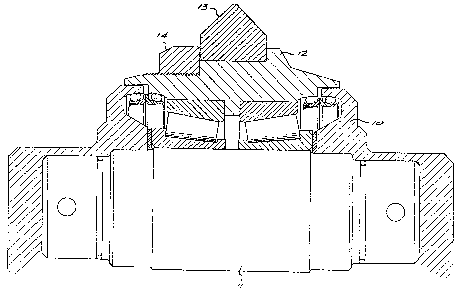Some of the information on this Web page has been provided by external sources. The Government of Canada is not responsible for the accuracy, reliability or currency of the information supplied by external sources. Users wishing to rely upon this information should consult directly with the source of the information. Content provided by external sources is not subject to official languages, privacy and accessibility requirements.
Any discrepancies in the text and image of the Claims and Abstract are due to differing posting times. Text of the Claims and Abstract are posted:
| (12) Patent: | (11) CA 1282054 |
|---|---|
| (21) Application Number: | 1282054 |
| (54) English Title: | DISC CUTTERS FOR ROCK WORKING MACHINES |
| (54) French Title: | OUTILS DE COUPE A DISQUES POUR FORATION DANS LE ROC |
| Status: | Expired and beyond the Period of Reversal |
| (51) International Patent Classification (IPC): |
|
|---|---|
| (72) Inventors : |
|
| (73) Owners : |
|
| (71) Applicants : |
|
| (74) Agent: | KIRBY EADES GALE BAKER |
| (74) Associate agent: | |
| (45) Issued: | 1991-03-26 |
| (22) Filed Date: | 1987-01-27 |
| Availability of licence: | N/A |
| Dedicated to the Public: | N/A |
| (25) Language of filing: | English |
| Patent Cooperation Treaty (PCT): | No |
|---|
| (30) Application Priority Data: | ||||||
|---|---|---|---|---|---|---|
|
ABSTRACT
A hardmetal ring is a size for size or low interference fit on the
body of a disc cutter of a rock working machine, such as a boxhole
borer, In one embodiment the ring is gable shaped and clamped
between a fixed annular shoulder and a detachable annular shoulder.
In another embodiment the ring is triangular in section and two
annular shoulders resting on it and inclined surfaces on the body
clamp the ring to the body.
Note: Claims are shown in the official language in which they were submitted.
Note: Descriptions are shown in the official language in which they were submitted.

2024-08-01:As part of the Next Generation Patents (NGP) transition, the Canadian Patents Database (CPD) now contains a more detailed Event History, which replicates the Event Log of our new back-office solution.
Please note that "Inactive:" events refers to events no longer in use in our new back-office solution.
For a clearer understanding of the status of the application/patent presented on this page, the site Disclaimer , as well as the definitions for Patent , Event History , Maintenance Fee and Payment History should be consulted.
| Description | Date |
|---|---|
| Inactive: IPC from MCD | 2006-03-11 |
| Inactive: IPC from MCD | 2006-03-11 |
| Time Limit for Reversal Expired | 2000-03-27 |
| Letter Sent | 1999-03-26 |
| Grant by Issuance | 1991-03-26 |
There is no abandonment history.
| Fee Type | Anniversary Year | Due Date | Paid Date |
|---|---|---|---|
| MF (category 1, 7th anniv.) - standard | 1998-03-26 | 1998-02-26 |
Note: Records showing the ownership history in alphabetical order.
| Current Owners on Record |
|---|
| BOART INTERNATIONAL LIMITED |
| Past Owners on Record |
|---|
| NOEL CUTHBERT POPE |
| ROGER STEPHEN LAMBSON |
| VAUGHAN GRIFFITHS |